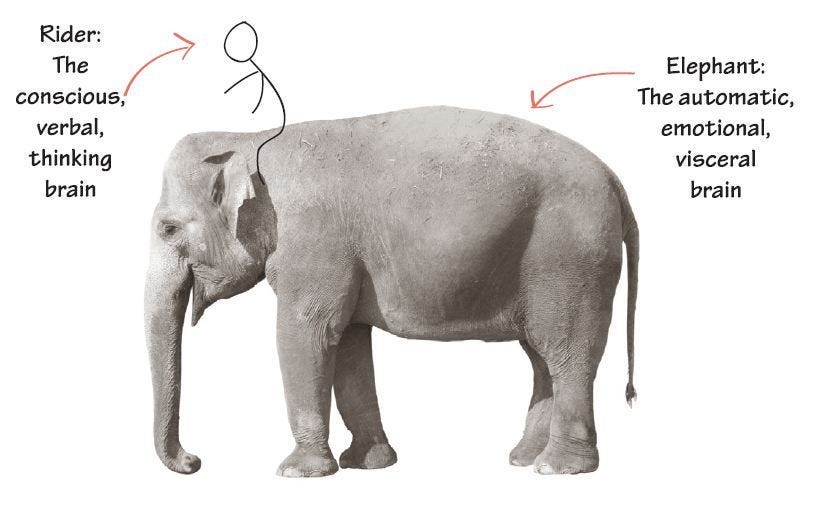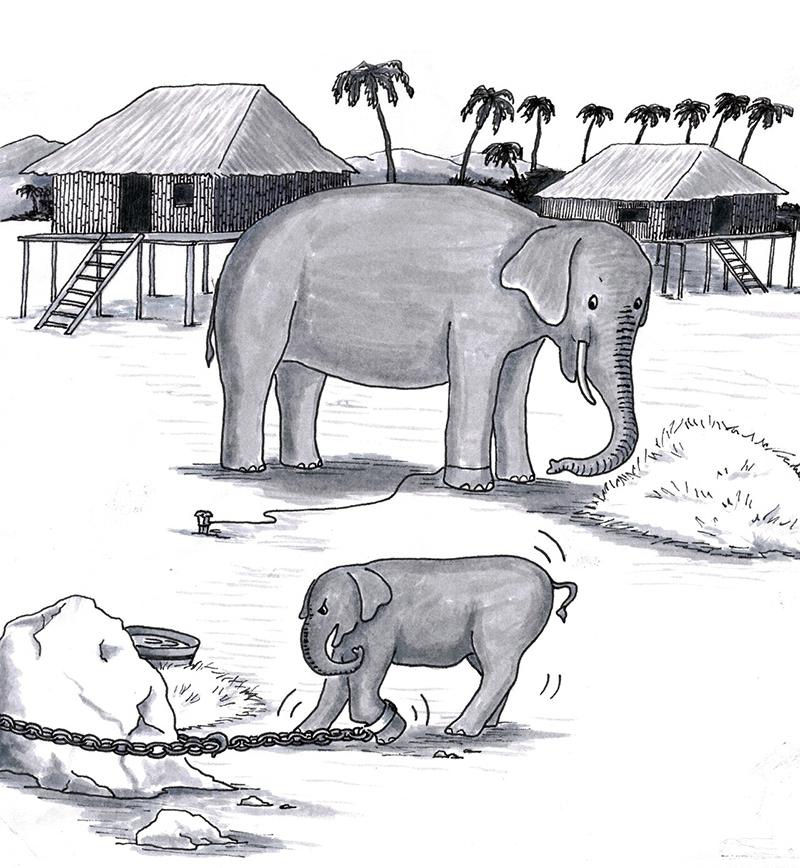How to lead engineers
You think you’re leading minds. You’re not. You’re trying to lead something older, heavier, and far less obedient.
The room went quiet the moment I walked in.
Not the polite quiet. Not the kind where people pause, look up, then go back to talking. No, this was the other kind. The kind you get in that weird hush at funerals right after someone whispers He was complicated.
It was 2013. I was a principal engineer at Yahoo in Santa Clara. I’d followed the smell of cupcakes and the sound of soft laughter into what I thought was a casual celebration.
It wasn’t.
It was a goodbye party.
Nilo was leaving. Our scrum master. She held four teams together with divine skill, and had a way of asking questions that made you say more than you meant to.
I walked in expecting awkward laughs, sugar highs, maybe a nice moment.
Instead, the room froze. Forks paused halfway to mouths. People stood like they'd been caught mid-confession.
“So reorgs, huh?” I cracked out something safe.
No one laughed.
That’s when I saw Nilo walking toward me. Calm. Poised. Like she’d already walked through this moment in her head a dozen times.
She stopped in front of me. Put her hands under my elbows and said, almost kindly:
“Taha… be nice to people.”
And that was it.
She didn’t raise her voice. Didn’t elaborate. She didn’t point to the fifteen engineers in the room pretending to enjoy cake while quietly plotting my spiritual assassination.
She just... said it.
The Myth of the Rational Engineer
You might be thinking, “Where the hell did you go wrong?”
Well, I used to think engineers were mostly rational.
If you gave them clarity and support, they’d move.
If you pushed them, they’d rise.
Most leadership books won’t tell you this:
You’re not leading robots. You’re leading people. And people are weird.
They get defensive. They feel shame. They fear being exposed. They nod in meetings and quietly shut down for two weeks.
I used to think you could lead engineers with logic alone.
That’s a lie.
The Elephant and the Rider
I didn’t have words for it then. But months later, I found the metaphor that made it all click. It came from The Happiness Hypothesis, a book by Jonathan Haidt.
He writes that your mind isn’t a single voice.
It’s two. One riding atop the other.
The first is the Rider.
It's the part you like to show people.
It plans. It organizes. It speaks in frameworks.
It tells a story about what should happen next.
It feels accomplished when it finishes a slide deck on time.
The Rider is clean. Efficient. It’s the LinkedIn version of your mind.
And it believes, truly, that it’s in control.
(Image Credit: Abhishek Paul on Medium)
Then there’s the Elephant.
It doesn’t talk much. But it remembers everything.
It remembers being ignored.
It remembers the team lead who rolled his eyes.
It remembers every time it spoke up and was pushed aside.
The Elephant is slower, older, and made of memory and muscle.
It doesn't care about roadmaps. It cares about feeling safe enough to move.
And the twist?
The Elephant is six tons of lived experience.
The Rider is 0.1 tons of polite intention.
The Rider thinks it’s in charge.
But the Elephant goes where it wants.
You can explain, incentivize, align.
The Rider will nod.
Take notes.
But if the Elephant isn’t with you?
You’re basically yelling from the back of a very large, very uninterested animal.
You’re not going anywhere.
The Elephant Craves Safety
A year after Nilo left, chaos showed up like it always does: fast, loud, and wrapped in corporate logic.
Marissa Mayer, then-CEO of Yahoo, announced that all software development would relocate to Sunnyvale.
No warning. Just... policy.
Remote teams were given two options:
Relocate or take the severance package.
I was the Principal Architect already in Sunnyvale, reporting to the VP of Platforms.
One of the teams was in India. I joined their weekly stand-up expecting business as usual. But this time, only six faces appeared on the screen, down from twenty.
I asked, “What’s going on?”
Silence.
One guy muted himself. Another adjusted his camera, hoping the motion would cancel out the question.
Then a junior finally spoke.
“Taha… we’re screwed. Half the team’s gone. Leadership has checked out. No one’s talking to us.”
They’d chosen to relocate. But with visas pending and no updates, they felt adrift, caught between decisions and silence.
Normally, I’d have rallied them.
Some peppy version of:
“Everything is fine. Stay focused. Keep shipping.”
Instead, I paused.
Because I remembered something I’d finally learned:
The Elephant doesn’t move when it’s scared.
It freezes.
They didn’t need a motivational quote about adaptability. They needed proof that their futures were still intact. And they were.
They didn’t need a roadmap. They needed momentum. Someone to help them remember how to move again
I asked, "If everything were normal, what would you be doing?"
One of them blinked, then said:
"Daily stand-ups, sprint planning, working through our backlog."
“Then let’s focus on that,” I said.
I buried myself in their backlog. Sat in their ceremonies. Hunted down missing context. Unblocked every ticket like my life depended on it.
We didn’t rebuild morale.
We rebuilt momentum.
And slowly, like a muscle waking from atrophy, the Elephant started moving again.
Six weeks later, that team was shipping with confidence.
They had structure, rhythm, and pulse.
A week before the team arrived in the U.S., my boss asked me for a 1:1.
“I want you to take the manager position of this team.”
The Elephant is Chained
There was an engineer named Sai.
Quiet. Brilliant. Practically allergic to the spotlight.
I needed someone to lead a high-risk, high-visibility migration to Apache Tez.
It wasn’t just complex — it was radioactive.
The whole system needed to be ported to Hive.
Two years of legacy code in Pig Latin.
Three months to do it.
No margin for failure.
I offered it to Sai.
He looked at me like I’d asked him to fly a jet.
“Big Data? Me?” he said.
Just three words. But they cracked something open.
Because I could hear everything behind them.
I heard the college professor who never saw him.
The time he built something good and got no reply.
The code review where someone told him he “wasn’t quite senior enough.”
There’s an old story — maybe you’ve heard it — about elephants in the circus.
When they’re young, trainers loop a thick rope around one leg and tie it to a stake in the ground. The baby pulls. Fights. Tries everything it can.
But it’s small. The rope holds.
Eventually, it stops trying.
Years pass. That baby becomes massive—ten feet tall, 12,000 pounds of raw muscle. Now, it could rip that rope out of the ground without effort.
But it doesn’t.
It remembers. Not the rope. The failure.
Sai had a rope like that.
Tied not to fact, but to a story he’d quietly internalized:
You’re not the guy they choose.
If I wanted him to own it, I didn’t need to hype him up.
I needed to cut the rope.
So I didn’t give him a speech. I gave him proof.
“I’ve seen your code. Your Java skills are rock solid.”
Sai straightened like a wire being pulled taut. Shoulders back. Eyes steady.
Like someone remembering they could move.
“MapReduce is built on Java. Your team has a mission. They need you to become a Big Data expert. And I can’t think of anyone better.”
He shook my hand and walked back to his desk like a man picking up a sword he didn’t know he was allowed to carry.
His task was nothing short of remarkable.
Over the next three months, he absorbed MapReduce, Pig Latin, Hive, Oozie, and half a dozen data tools.
He finished the migration in a single quarter.
Not because of potential.
Because the rope was never real.
Just familiar.
Ownership starts with the Elephant
I think about Nilo more than I admit.
About how she could have dragged the whole thing into the open.
Called the meeting. Named names. Lit the fire.
She didn’t.
She gave me five words:
“Taha… be nice to people.”
It wrecked me in the quietest way possible.
Which, I’ve come to realize, is the only way some truths ever stick.
Because leadership isn’t about performance. It’s not about vision decks, or dashboards, or saying “just one more thing” before the meeting ends.
It’s about understanding what lives beneath the surface.
It’s about knowing that logic won’t move people who don’t feel safe. That the Elephant, not the Rider, carries the weight. And that people rarely say what they need.
They wait.
And if you’re paying attention?
If you listen past the words?
If you slow down enough to see the flinch, the hesitation, the quiet pause before they say, “Yeah, we’re good”?
That’s when real leadership begins.
Next Time You See Someone Freeze…
Don’t push harder.
Pause.
Look closer.
And ask yourself:
What’s holding their Elephant back?
Then help them remember:
The rope was never real.
Thanks for reading.
If this resonated, you’ll grow with my course: The Top Tech Leader. It’s practical, eye-opening, and designed to help you move teams that feel stuck. Join 1000+ global leaders.
Follow me on LinkedIn for daily insights shared with 70,000+ incredible minds.
If you’re looking to grow your career, here are three ways I can help you:
The Resume Ghostbuster: Join 5,000+ people who’ve transformed their resumes into recruiter magnets. Use the robust AI script to transform your resume into the template of your choice. Includes LinkedIn profile update and job search strategies.
The Top Engineer Method: Join 1,000+ engineers in my flagship course.
The Top Engineer Method teaches you frameworks for getting unstuck in your career by showcasing your work, building relationships, and handling work politics with confidence. Come learn to grow your influence, get promoted faster, and stay focused on solving the problems that matter.The Top Tech Leader Method: Join 500+ engineering leaders across the globe inside the Top Tech Leader Method. This comprehensive course will teach you the methods I used to lead high-performing teams, influence executives, and grow into an engineering executive at top-tier tech companies.








You have such a unique way with words—this article truly kept me engaged from start to finish. Everything resonated so deeply. While I'm just a fresher at the corporate level, your analogy beautifully captured what I’ve experienced while leading in high school and during my graduation years—even if on a smaller scale. Thank you for sharing such a thoughtful and powerful piece of writing.
Why didn't you question your VP of Platform about these policies? The way I see it is that you put pressure on your team just to get that promotion. There is no point solving problems with them. You got shat you wanted.